Bound for Taupo we stopped to try a spot of fishing on the famous Lake Taupo, North Island's hottest fishing spot apparently. Probably if you had a boat you would reel in plenty of trout from the lake's depths.
In the town we visited the Art Gallery and Museum. There we enjoyed the re-constructed Chelsea Flower Show Gold Medal winning New Zealand Garden, Ora.
The town was quite a tourist area and busier than we were used to. Later we headed to two more attractions, Craters of the Moon, a trail around a steaming, volcanic area and a honey centre where you got both to see the bees at work and sample the product.
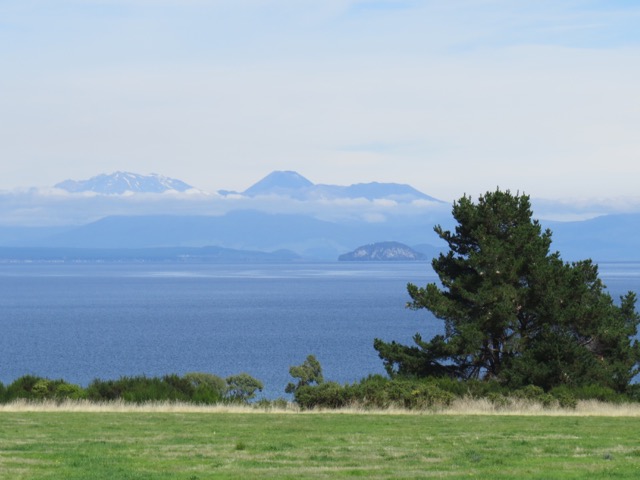
Lake
Taupo
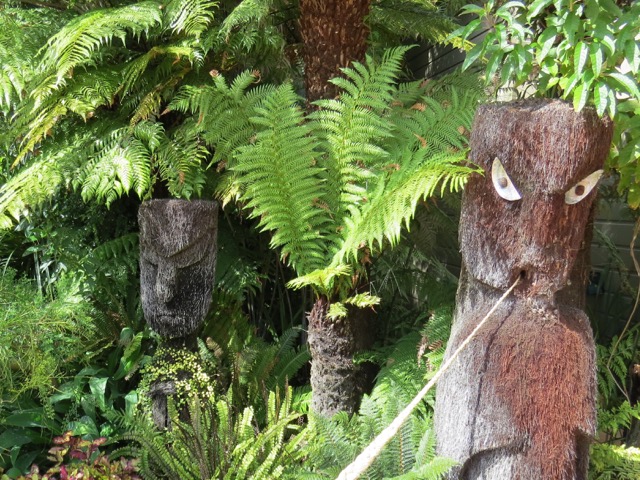
Taupo
Art Gallery and Museum
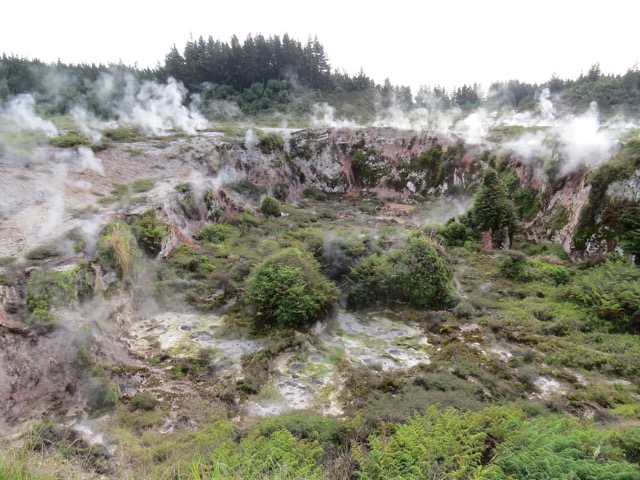
Craters
of the Moon
We, and hundreds of others, found a free camping area on the Waikato River. Of course as it was on a river, the rod had to come out. Phil impressed a couple who were enjoying sunset drinks on the riverbank by catching a small rainbow trout on his first cast. It was his only catch, but the timing was good!
We headed to Rotarua the next morning. The city lies in a highly volcanic area and is a major Maori centre. There are several options available for visiting a Maori village and getting a taste of their lifestyle.
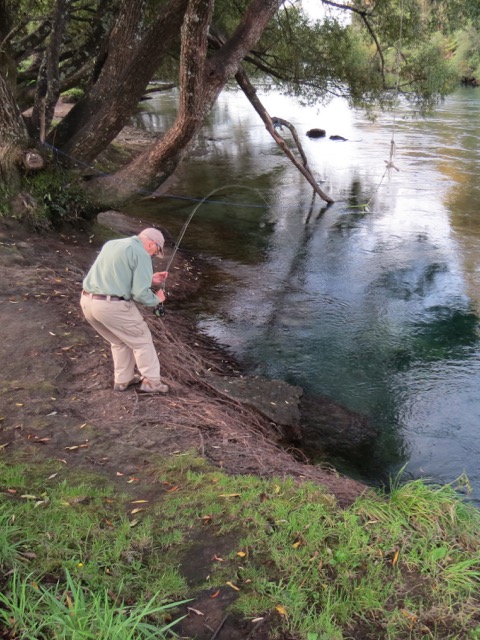
First
cast special.
On a whim, mostly because there was a free cultural performance included in the entry price, we opted for the Whakarewarewa Village. Our selection obviously wasn't made on how easy it was to pronounce!
This turned out to be a great choice as it was a real Maori village, where people lstill ived and worked and was run by the village people, with all profits being reinvested in the tribe. The other option, just across the fence, was a government run Maori centre on land taken from the Whakarewarewa tribe.
On arrival we were confused. We were told we were just in time to join the nine o'clock tour. Frowning at one another we checked our watches. The lady must have meant ten o'clock, as it was already five past. Nonetheless we rushed away to tag along with the tour just leaving the visitor centre.
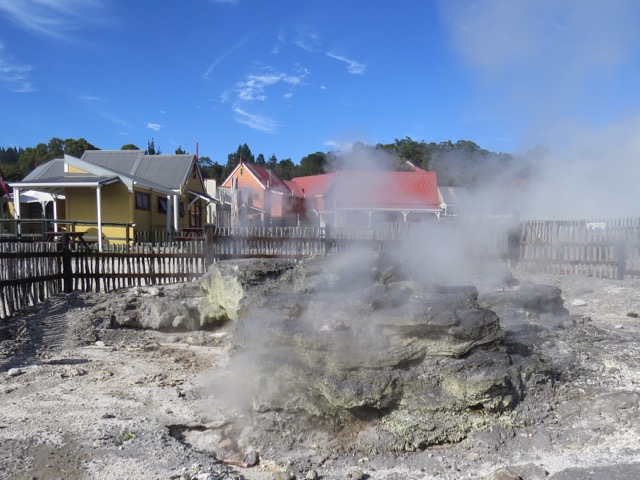
Whakarewarewa
Village
Our tour began viewing a local house which had to be abandoned due to the volcanic activity beneath it. One advantage of the heat beneath the ground was that it was easy to cook food in an underground oven, or hangi, and this was mostly how the tribe still cooked. We enjoyed corn-on-the-cob cooked this way.
Next stop was the communal bathing pools, still used by the tribe to take hot baths. Obviously they waited until the tourists had left. You would never run out of hot water!
We viewed the church and graveyard, where bodies had to be buried in concrete mounds above ground to avoid cooking. Some graves had even had to be moved when volcanic activity shifted!
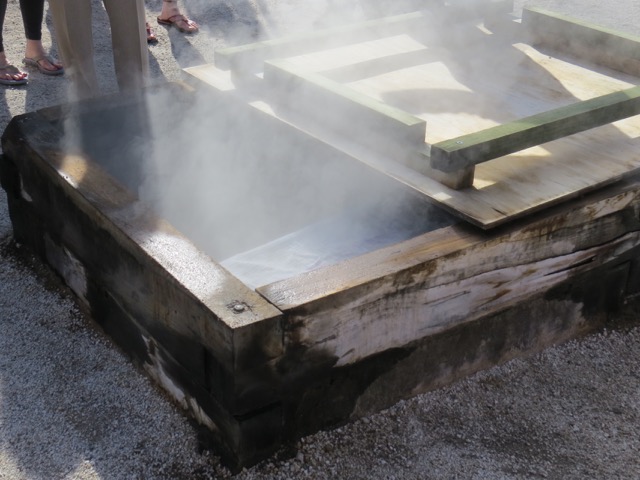
Maori
hangi (oven)
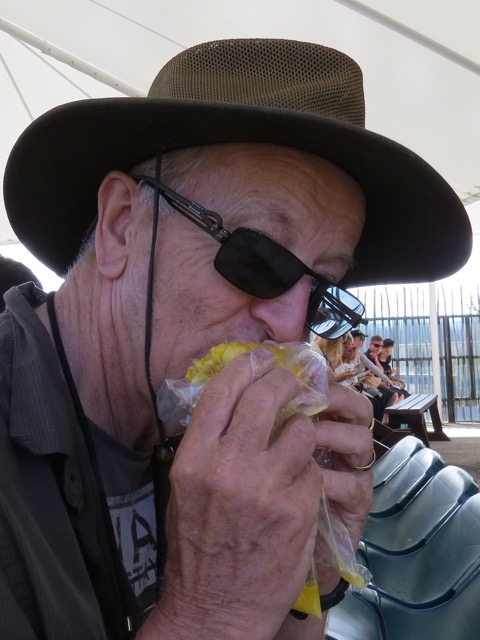
Corn
cooked by volcano
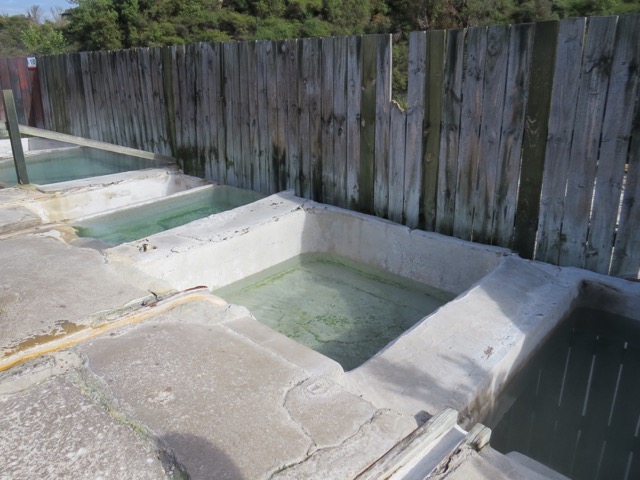
Communal
baths
When we viewed the Geyser, the split between tribe land and government land opposite was obvious, as a fence ran around, allowing viewing of the same Geyser from both sides. Waiting for the Geyser to blow became a little tense as we were worried that it was already past time for the free cultural show to start. Strangely our guide didn't mention it at all. Perhaps it wasn't happening.
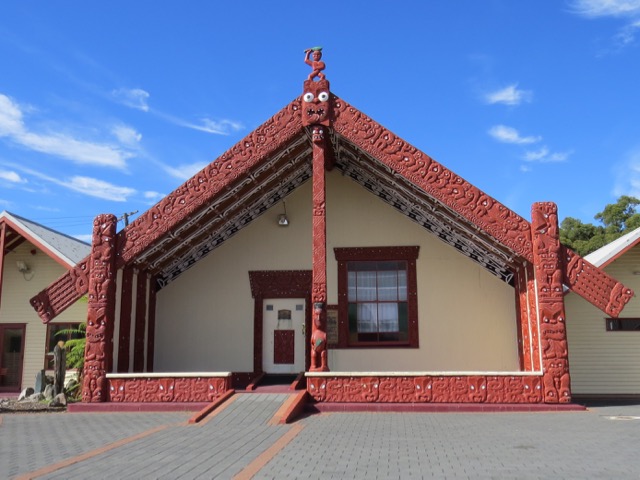
Meeting
House
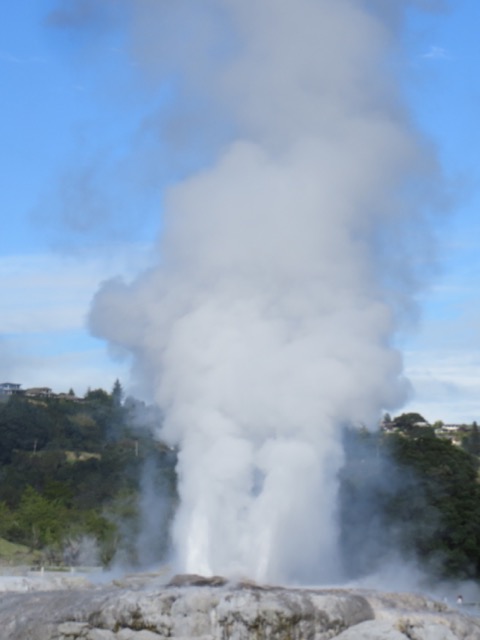
There
she blows!
The last stop on our tour was the village's traditional meeting house (wharenui). After that we decided to swing by the theatre after all, in case the cultural show was still going.
We arrived to find only a family of Germans, who seemed to be settled in for a long wait. “What time is the show”? We asked, hoping they weren't there for the 2 pm show. They told us that it started at 11 am, which according to us was a half hour in the past. Then the penny dropped. The clocks had gone back for autumn the previous night and the fact had passed us by! We were in time to get really good seats for the performances of historical Maori songs, traditional stories and a terrifying demonstration of the war dance, the Haka, where it had to be said that the women were even more intimidating than the men!
Our tour ended by the river where, in keeping with a long time tradition among the tribe's children, several waited in the water inviting passersby to throw money. The children would then scramble to reach the submerged coins first, and if successful would place them in their mouths to keep them safe. Very enterprising.
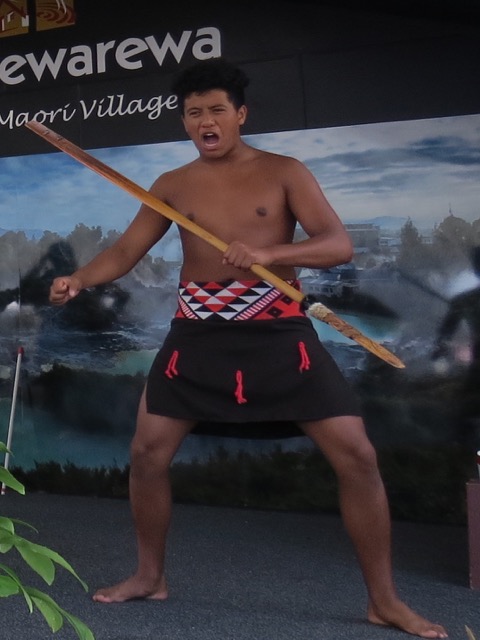
Haka
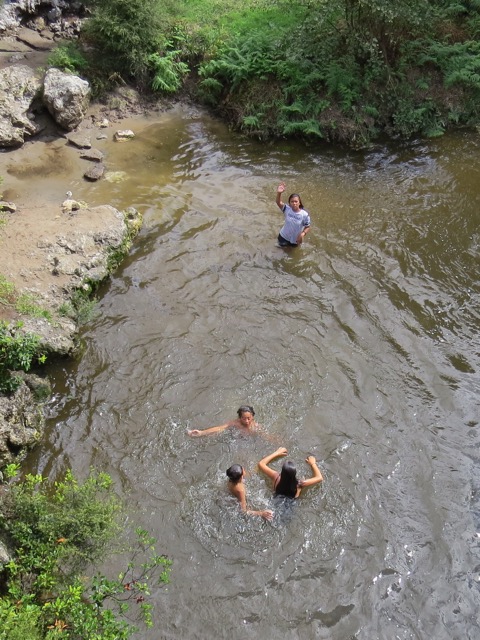
Waiting
for pocket money
Having enjoyed the tour, we were ready to get out of the city and headed east to check out the Rangitaiki River but found it heavily coloured due to the recent heavy rains from the tropical cyclone which had just hit the area.
It was decided that it was better the devil we knew and we began the trip back to Turangi for more fishing, planning to check out the Hinemaiaia River on the way. There was a large accessible public area with free camping right on the river along a gravel road which roughly followed its course.
We made a stop at the first camping area we came to but the river was quite a walk away, so we pressed on. Unfortunately the turn out of the area was designed for vehicles going back down to the main road and as we attempted to make the tight turn in seven metre long Charlie, we became momentarily grounded on a large grassy tussock. Apparently the driver didn't even notice, despite snapping off the handle for the waste tank! We vowed to never breathe a word about this incident until we'd left the country!
Finally we reached an idyllic riverside spot which was fine for overnight camping, provided we reversed in so we could get out again! There was nobody for miles and the location was beautiful. We even had time to check out the fishing before it began to rain again.
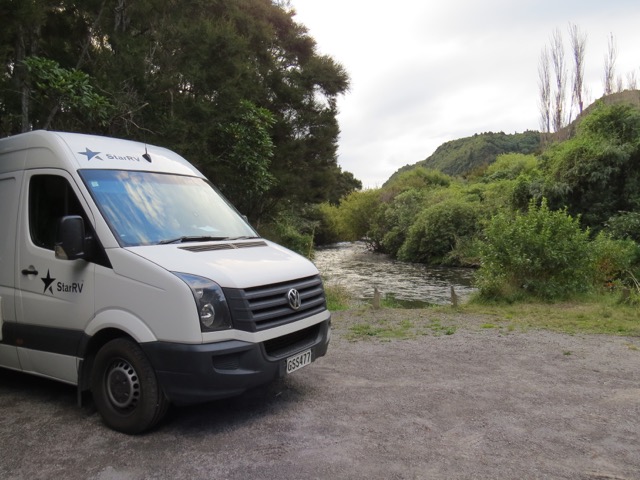
We
want to be alone!
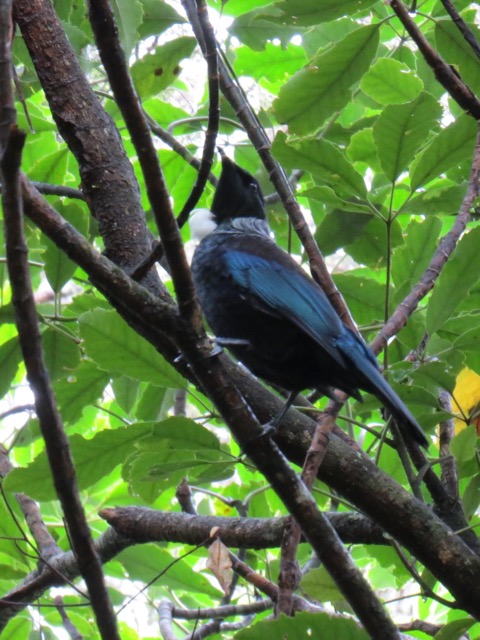
Tui
Bird
Back at Turangi we fished the Tongariro again. Early the following morning Phil dashed off in the pouring rain to fish once more, only to return a short while later soaking wet and having lost his hat when he took a tumble into the suddenly much higher river. Fortunately he survived unscathed. It wasn't a good start to the day. We were perplexed what to do on such a rainy day when repairs to the dam upstream had made the river virtually unfishable.
It was time to move on, even if we weren't sure where we were going. Perhaps we could head to Matamata to visit Hobbiton, the set from the Lord of the Rings and Hobbit movies and hope that the rain would stop. We'd wanted to take the evening tour which included a banquet at the Green Dragon pub, but all of these tours during our visit had been fully booked up. We checked one last time when we were on the way and found that spaces had opened up for that very day. Quickly we booked by telephone. Perhaps the day was going to get better!
From the moment we met our tour guide, Sonny, we could tell it was going to be a fun tour. We rode the motorcoach through the farmland the location scouts had selected for construction of Hobbiton, bringing another source of income to the farming family. The rolling pastoral hills were just like in the movies, because they were the actual ones in the movies. After the Lord of the Ring series of films, the original set had been completely dismantled and returned to its previous condition but once the Hobbit movies were scheduled the whole village was rebuilt and remained for posterity.
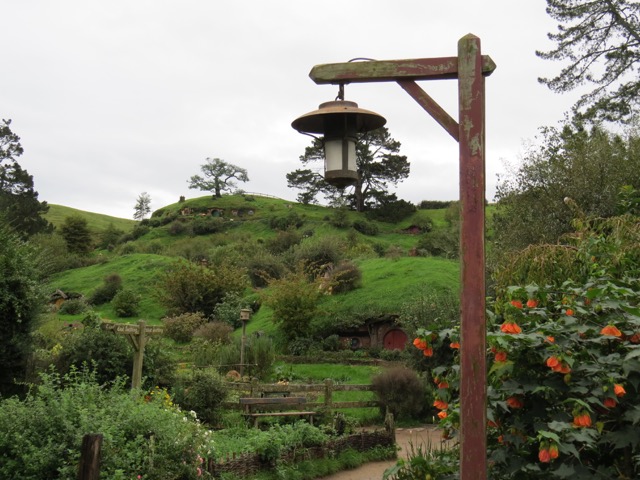
First
glimpse of Hobbiton
A major advantage of taking the pricier evening tour, which included the banquet, was that there was only our tour party in the village. This gave better photo opportunities without other tour groups standing around in front of things you were trying to photograph. The tour was at a more leisurely pace and the rain even held off as we explored Hobbiton. It turned out that there were various scales of hobbit houses. Small ones to make Gandalf look tall and big ones to make the Hobbits appear short. Such trickery!
The Green Dragon was a lovely pub and the local brew was good too. We had drinks before the unveiling of the banquet in the dining room, where we sat at large communal tables passing around bowls of food in true Hobbit style. We'd never seen so much food. Despite our last minute booking, Gluten Free food was provided including three desserts! We were even allowed to camp overnight in the car park, allowing us to enjoy a couple of Hobbit beers!
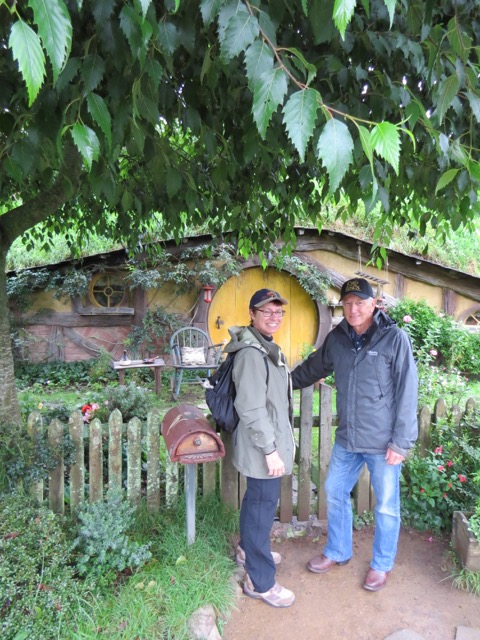
I
could see us living here!
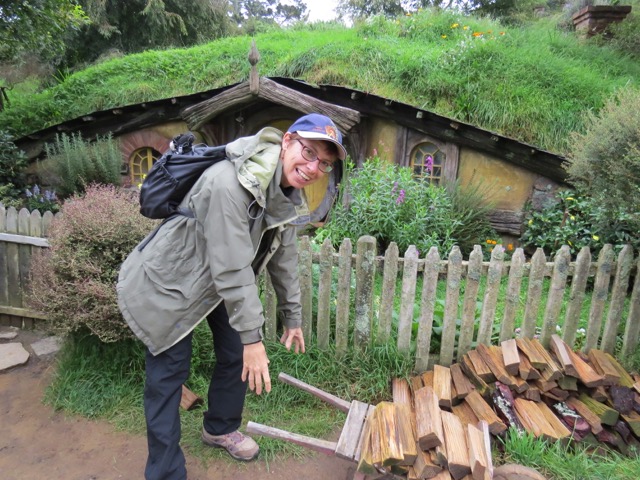
Working
for our dinner
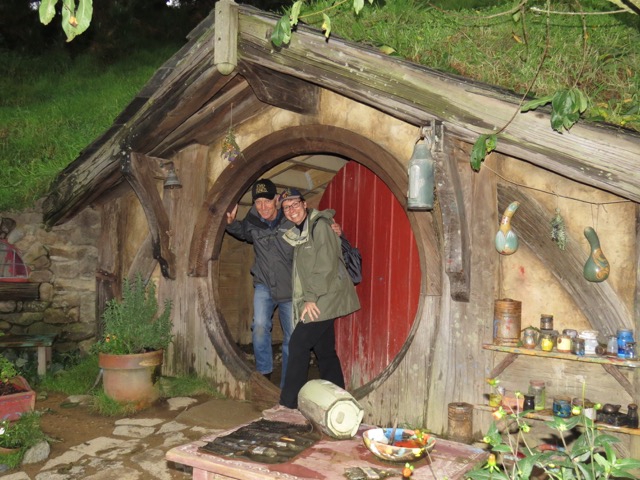
A
hobbit scaled hobbit house.
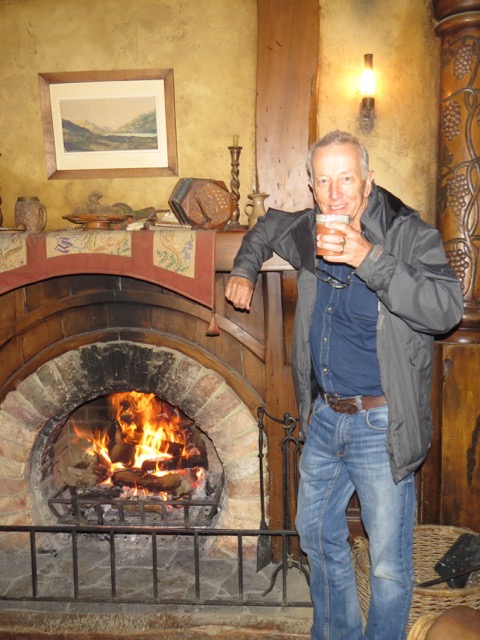
Sampling
hobbit home brew at the Green Dragon
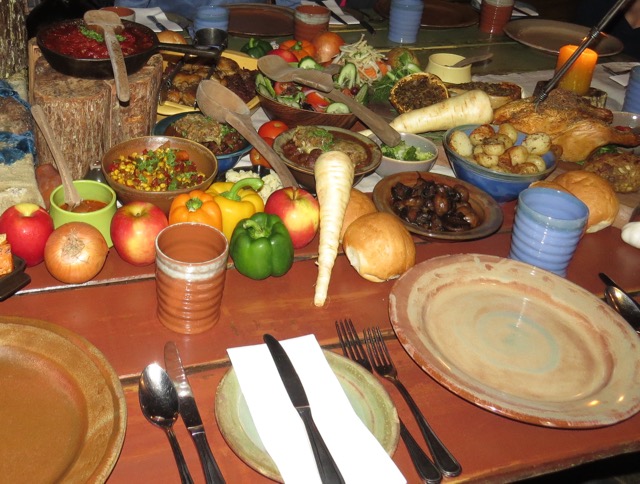
Hobbit
banquet
Unfortunately by the time we'd eaten as much of the food as it was humanly possible to eat (hobbits must have huge appetites!), the deluge was back and our return walk to the motor coach was a wet one. We were scheduled to view the hobbit holes with lights on inside and smoking chimneys. I'm sure it would have been very atmospheric if we weren't getting soaked to the skin. The guides were determined we wouldn't miss out though, so we huddled beneath our umbrellas while they talked at various different landmarks, despite their words being drowned out in the rain.
We were glad to reach the motor coach and the prospect of escaping the rain, only to find that guide with the other half of our group, obviously even more talkative, had the keys in his pocket. Twenty strangers got to know each other better as we huddled beneath the only available shelter!
Back at the camper we removed our soaked clothes and placed them in the bathroom on top of the heap of other soaked clothes from Phil's earlier unplanned swim. The inside of the camper was beginning to resemble a swamp!